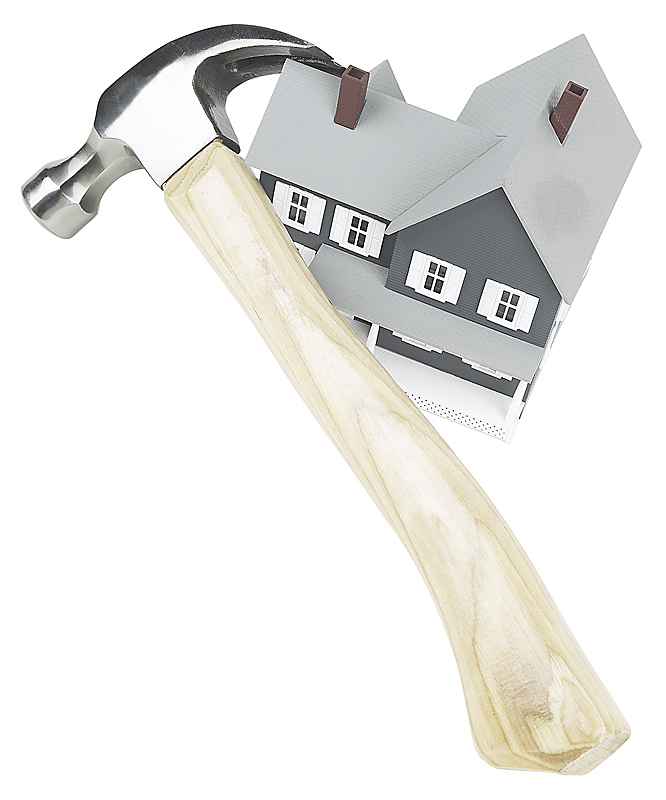The right kind of roof and ventilation can keep you cool and dry
By John D’Annunzio, Columnist, UnionvilleTimes.com
 Let’s talk about the most commonly used shingles: organic asphalt shingles. They last about 18 to 20 years. The only problem with them is that in time they can cup in very humid and wet climates. Try to purchase a shingle with an algae resistant coating. There is an asphalt / fiberglass shingle which is heavier and moderately priced and lasts about 30 years. Both type shingles must be installed at a roof slope of 2 units vertical in 12 units horizontal (2:12) or greater. Be careful on hot days when installing / walking on the roof; the granules will shed and leave black spot wherever you walked.
Let’s talk about the most commonly used shingles: organic asphalt shingles. They last about 18 to 20 years. The only problem with them is that in time they can cup in very humid and wet climates. Try to purchase a shingle with an algae resistant coating. There is an asphalt / fiberglass shingle which is heavier and moderately priced and lasts about 30 years. Both type shingles must be installed at a roof slope of 2 units vertical in 12 units horizontal (2:12) or greater. Be careful on hot days when installing / walking on the roof; the granules will shed and leave black spot wherever you walked.
Shingles classified using ASTM D 3161 are acceptable for use in wind zones less than 100 MPH. According to the IRC (International Residential Code) are wind speed is 70 MPH. Shingles classified using ASTM 3161, Class F, is acceptable for use in all weather conditions where special fastening is required.
Clay tiles are very slippery but can last up to 45 years provided they are installed in a warmer climate such as in the Southern US. Colder climates will damage these tiles because of snow and frost upheaval which will cause them to crack. Concrete tiles last about 25 to 30 years and the elements have a slow effect as far as longevity. Clay and concrete roof tiles must be installed on a roof slope of 2 ½ units vertical in 12 units horizontal (2 ½:12) to four units vertical in 12 units horizontal (4:12). This type of roof covering is great for fire resistance but is very expensive to install. Now remember the weight of these types of materials and be sure your rafters can handle the extra load.
Slate tiles can be very slippery but could last 75 to 100 years and as far as weather is concerned. Basically they take a long time to deteriorate. They can be installed on roof slopes 12 units horizontal and greater. They come in natural colors and are usually 3 1/6”to ¼’’ thick and are also fire resistant. Again, consider the weight.
Here are some basic prices:
A 42’ X 28’ foot roof with a roof slope of 5:12 to 8:12( gable roof ) with asphalt or fiberglass shingles would cost about $5,000 to $7,000 depending on any skylights or chimney flashing, ridge vents, or gable vents.
Same as the above conditions but with cedar about $12,000 to $14,000.
Same as the above conditions but with clay tiles about $14,000 to $16,000.
Same as above conditions but with concrete about $11,000 to $12,000.
Now let’s talk about ventilation: your attic can develop a heat range of about 150 degrees on very hot days.
The IRC mentions attic ventilation by means of ventilated openings. The correct way for ventilation is to use soffit vents together with either gable-end louvers or ridge vents. Here is how the ridge vent combo soffit vents work with a good breeze outside: the air rushes over the roof and over the top of the ridge vent drawing outside air in through the soffit vents hence cooling the attic.
What about stagnant, humid days with no air circulation? The thing I always liked and installed in my homes was an attic fan. It’s best to buy one with sealed bearings and a humidistat combination temperature setting. According to the IMC the fan rate should be a minimum of 0.02 CFM per sq. foot of horizontal area and be automatically controlled to operate when the relative humidity in attic exceeds 60 %.
You have to remember the importance of air movement in attics. Without it the exposed structural materials such as rafters, roof sheeting, insulation, and any appliances and electrical components will suffer from moisture build up resulting in mold growth and rust on electrical components.
The bottom line is a cooler attic, which means less heat penetrating your second or third floor ceiling. It’s cheaper to run an attic fan on occasion than have your air condition operate more then need be.
John D’Annunzio is a local Commercial and Residential builder who has held nearly every job in the construction industry from heavy equipment operator to home builder. He is ICC building code certified and lives and operates in Chester County, PA. His column will appear weekly and address various home improvement and building issues with special attention to subjects of interest locally.
Contact John at johnd3656@verizon.net






